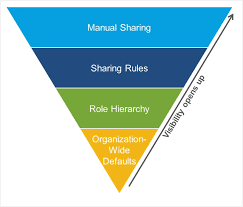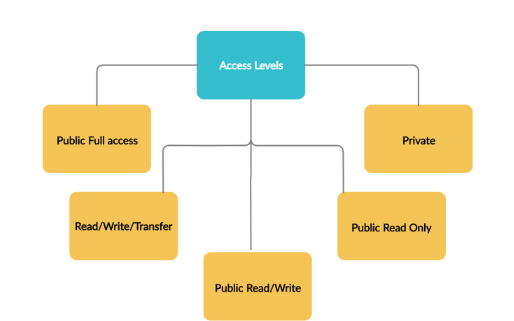
- Introduction to OWD (Organization-Wide Defaults)
- Importance of OWD in Salesforce Security
- OWD Access Levels
- Setting OWD for Objects
- Public Read-Only vs Public Read/Write
- Private OWD Settings
- Controlling Record Access with OWD
- Impact of OWD on Sharing Rules
- Testing and Validating OWD Settings
- Conclusion
Excited to Obtaining Your Salesforce Certificate? View The Salesforce Training Offered By ACTE Right Now!
Introduction to OWD (Organization-Wide Defaults)
across the organization. OWD ensures that sensitive business information is only accessible to users who are explicitly authorized to view or edit it, thereby enforcing strict data governance policies. In Salesforce, OWD settings are configured at the object level, allowing system administrators to specify whether records should be set as Private, Public Read Only, or Public Read/Write, depending on the organization’s security and collaboration needs. Include Data Science Training in These settings act as the baseline layer in Salesforce’s record-level security model, which is further refined through role hierarchies, sharing rules, teams, and manual sharing mechanisms to grant broader or more restricted access as needed. By carefully configuring OWD, organizations can strike a balance between data protection and operational efficiency, ensuring that users have the access they need to perform their jobs while safeguarding critical data from unauthorized exposure. OWD settings are particularly important in multi-departmental environments where access needs to be tailored based on business units, user roles, and compliance requirements.
Importance of OWD in Salesforce Security
OWD is vital for maintaining data integrity and security in Salesforce environments. It determines the default access users have to records they do not own, thereby preventing unauthorized data access.
Key benefits of OWD in Salesforce security:
- Data Privacy and Protection: Ensures that sensitive data is only accessible to authorized users. Information Security Management protects confidential information by limiting record visibility to authorized individuals only.
- Granular Record Access: Provides fine-grained control over data access through sharing rules and role hierarchies.
- Compliance and Governance: Helps organizations comply with data privacy regulations by controlling who can view or edit records.
- Prevents Data Manipulation: Reduces the risk of accidental or unauthorized data modification.
By setting appropriate OWD levels, organizations can maintain a balance between security and collaboration, ensuring that only necessary users have access to specific data.

OWD Access Levels
OWD offers several access levels that determine the visibility of records for users who do not own them. These access levels can be configured separately for each object in Salesforce. The available OWD access levels include In Salesforce, different Organization-Wide Default (OWD) sharing settings determine record visibility and access. The Private setting ensures that only the record owner and users higher up in the role hierarchy can access the record, making it ideal for highly sensitive Data Security . With Public Read-Only, all users can view the record, but only the owner can edit it; this is suitable for reference data where editing needs to be limited. The Public Read/Write setting allows all users to view and edit records, regardless of ownership, making it appropriate for collaborative data such as public product catalogs. The Controlled by Parent setting means access to a child record is dictated by the parent record’s access level, commonly used in master-detail relationships. For example, if the Account object’s OWD is set to Private to restrict visibility, then related Opportunity records can be set to be controlled by the parent, inheriting the Account’s access level.
Setting OWD for Objects
Configuring OWD in Salesforce is a straightforward process managed through Setup. Here’s how you can set OWD for specific objects:
- Navigate to Setup: Go to Setup → Security → Sharing Settings.
- Choose the Object: Select the object you want to configure OWD for, such as Account, Contact, or Opportunity.
- Select the Access Level: Choose the appropriate access level: Private, Public Read-Only, Public Read/Write, or Controlled by Parent.
- DataRaptors: DataRaptors are ETL (Extract, Transform, Load) tools that enable efficient data retrieval and Mapping between Salesforce and external systems.
- Save and Apply Changes: Save the settings. Salesforce will automatically recalculate the sharing rules based on the new OWD configuration.
To ensure a smooth transition and proper access control, it is important to complement these changes with Salesforce Training for administrators and end users.
Best Practices:
- Use Private OWD settings for sensitive data, then grant access through sharing rules.
- Apply Public Read-Only for less sensitive data to prevent accidental modifications.
- Data Confidentiality: Prevents unauthorized access to sensitive information.
- Granular Control: Access can be granted selectively using sharing rules and manual sharing.
- Enhanced Security: Reduces the risk of accidental data exposure.
- Financial data: Restrict access to financial reports to authorized teams only.
- HR records: Keep employee information private and accessible only by HR personnel.
- Restricted OWD = More Sharing Rules: When OWD is private, sharing rules are essential to grant broader access.
- Public OWD = Fewer Sharing Rules: When OWD is public, fewer sharing rules are needed, as users already have access.
- Performance Considerations: More sharing rules can lead to performance overhead, especially in large orgs.
- Best Practice: Minimize the number of sharing rules by carefully setting OWD and using role hierarchies effectively.
Excited to Obtaining Your Salesforce Certificate? View The Salesforce Training Offered By ACTE Right Now!
Public Read-Only vs Public Read/Write
Understanding the difference between Public Read-Only and Public Read/Write is essential for managing record-level access effectively:
| Aspect | Public Read-Only | Public Read/Write |
|---|---|---|
| Access Level | Users can view records but cannot modify them. | Users can view and edit records, regardless of ownership. |
| Ideal Use Case | Displaying non-editable reference data. | Collaborative data like project updates or shared resources. |
| Data Protection | Prevents accidental modifications by unauthorized users. | May lead to data integrity issues if not properly managed. |
| Examples | Financial data, company policies, contracts. | Shared tasks, public product catalogs. |
Thinking About Earning a Master’s Degree in Salesforce? Enroll For Salesforce Masters Program by Microsoft Today!
Private OWD Settings
Setting OWD to Private ensures that only the record owner and users above them in the role hierarchy can access the record. This is the most restrictive setting, providing maximum data Cyber Security in the Cloud.
Advantages of Private OWD:
Use Cases:

Controlling Record Access with OWD
OWD settings are the foundation of record-level access but can be enhanced through role hierarchies, sharing rules, and manual sharing. OWD (Organization-Wide Default) settings form the foundation of record-level access in Salesforce, but they can be further enhanced through role hierarchies, sharing rules, and manual sharing in Salesforce Security . Role hierarchy grants access to records based on a user’s position in the organizational structure, allowing users higher in the hierarchy to access records owned by their subordinates. Sharing rules are used to extend record access to users based on specific criteria or record ownership, making them particularly useful for enabling cross-team collaboration. Manual sharing allows record owners to grant access to individual records on a case-by-case basis, offering a flexible way to provide temporary or exceptional access when needed.
Preparing for Your Salesforce Interview? Check Out Our Blog on Salesforce Interview Questions & Answer
Impact of OWD on Sharing Rules
OWD settings directly impact how sharing rules are applied. When OWD is set to Private, sharing rules are necessary to extend record access. Conversely, when OWD is Public Read/Write, sharing rules become redundant.
Key Impacts:
Testing and Validating OWD Settings
After configuring Organization-Wide Default (OWD) settings in Salesforce Certification , it is crucial to test and validate them to ensure they align with the organization’s security requirements. One key step is to log in as different users to verify record visibility across various profiles and roles. Additionally, you should use Salesforce Sharing Reports to generate detailed reports that help review record-level access and identify any inconsistencies or unintended access. It’s also important to simulate access scenarios, using the “View All” and “Modify All” permissions with caution during testing, as these can override standard sharing rules and potentially mask issues with actual access settings.
Conclusion
Organization-Wide Defaults (OWD) are a critical component of Salesforce’s comprehensive security and sharing model, serving as the baseline level of record access control across the platform. OWD settings determine the default visibility and editability of records for users who do not own them, helping organizations establish a secure and structured access framework. By configuring OWD strategically and supporting it with Salesforce Training, administrators can safeguard sensitive business data, enforce internal security policies, and maintain regulatory compliance across departments and user groups. For example, setting records to Private ensures that only record owners and users with explicit sharing permissions can view or modify them, while Public Read Only or Public Read/Write options enable broader access when collaboration is required. When used in conjunction with other Salesforce features like role hierarchies, sharing rules, manual sharing, and team-based access controls, OWD provides a layered and flexible security model. This allows organizations to tailor access precisely to business needs—balancing data protection with operational efficiency. As such, properly configuring OWD is essential not only for protecting critical information but also for enabling seamless collaboration, transparency, and trust within the organization.


